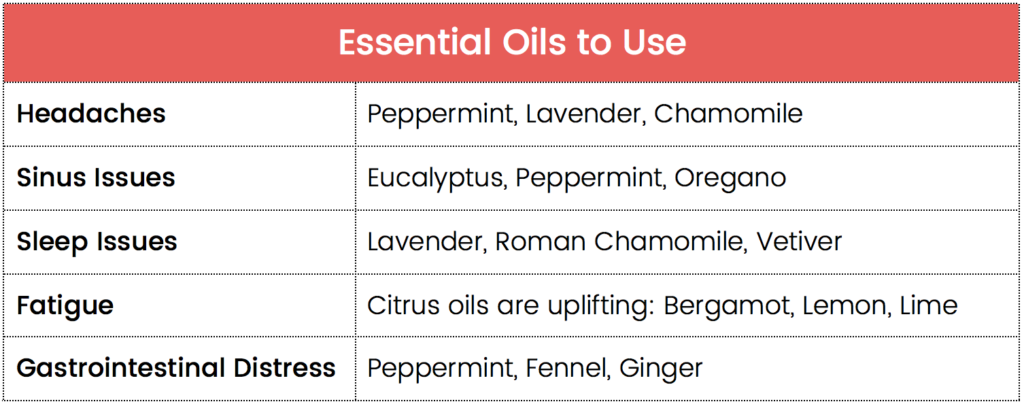Continuing with our theme of alternative modalities, this week I am discussing essential oils, which lead the pack as one of nature’s original supporters of our health.
I recently earned my certification from Dr. Josh Axe’s Essential Oil Institute as an Essential Oil Coach, and I love to discuss their benefits for our health.
I use essential oils (EOs) for everything in my home, from bumps and bruises to simple, homemade, nontoxic cleaning products.
In this blog post, I will give you a primer on essential oils and how to get into action using some of the basic, more popular oils.
What are essential oils?
EOs are the essence and medicinal component of a plant.
They are the highly concentrated smell and flavor of plants, most commonly used in the alternative health practice of aromatherapy.
The National Association for Holistic Aromatherapy calls it “the art and science of utilizing naturally extracted aromatic essences from plants to balance, harmonize and promote the health of body, mind and spirit.”
There are more than 90 different EOs, each with its own distinct smell and set of unique health benefits.
How do essential oils help us?
Each plant has a chemical composition that is uniquely helpful in supporting our health in some way.
Before the existence of laboratories and chemical science, native people knew that certain plants were helpful in the healing of various health problems.
More and more controlled scientific studies are being conducted on the efficacy of essential oils, due to their increased popularity.
Most of the current studies are conducted on the effects of EOs on stress, headaches, depression, insomnia, and inflammation.
Is there a difference in quality between oil brands?
YES! With increased popularity comes cheap, low-grade options for purchase.
Look for oils that are extracted by distillation or cold pressing and avoid oils diluted with synthetic fragrances, chemicals, or oils. Though expensive, organic oils are best if available.
How do I use essential oils?
There are many ways you can use EOs. The most common is to use an essential oil diffuser, which combines undiluted drops of your oil of choice with distilled water and disperses it into the air.
You can now even use a diffuser in the USB port of your computer at your work desk (rosemary has been shown to improve concentration and focus in studies).
Essential Oil Blends
You can also combine EOs and apply them to your body, either neat (undiluted) or mixed with a carrier oil like fractionated coconut oil.
Especially when diluted, EOs are very gentle; however, always patch test any area of the body on which you plan to use your oils in order to check for allergic reactions.
Using them in a roller ball, is an excellent way to apply these blends. Be sure to label them as you begin to build up your supply.
Essential Oils in the Home
Adding lavender essential oil to your laundry load is easy and smells great.
You can also make your own cleaning products with various oils in place of harsh chemicals.
Tea tree, lemon, and thyme are effective for home cleaning products.
Top 5 Health Issues Usage Chart for Essential Oils
The following is a list of the top 5 health issues reported on my free High-Performance Health Assessment, along with some oil suggestions:
As with any health decisions, please be sure to consult with your medical practitioner before trying anything new for your health.
Essential oils are not intended to treat or replace treatment for medical conditions. They are simply a great start and/or addition to support a more natural lifestyle.
———-
Resources:
https://naha.org/explore-aromatherapy/about-aromatherapy/what-is-aromatherapywww.draxe.com


